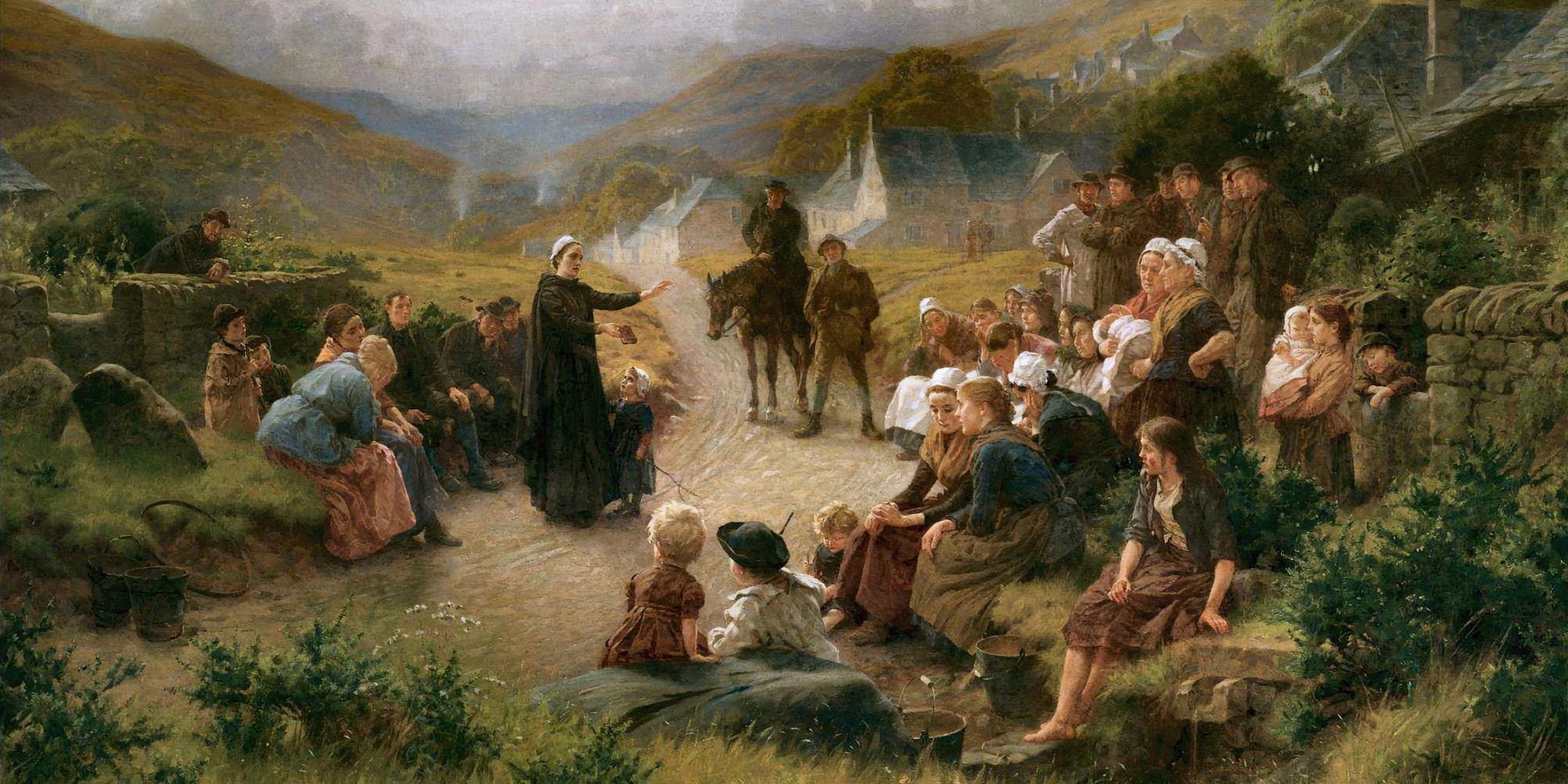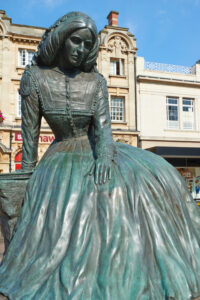
Adam Bede
Published in 1859, Adam Bede was the first novel by Mary Ann Evans, written under her pen name George Eliot. David Stuart Davies takes up the story.
‘With a single drop of ink for a mirror, the Egyptian sorcerer undertakes to reveal to any chance comer far-reaching visions of the past. That is what I undertake for you, reader.’
George Eliot was the pen name of Mary Ann Evans (1819-1880) who was known as a journalist, poet and translator before she wrote Adam Bede (1859), the first of her seven novels. She used a male soubriquet in order that her fiction was judged separately from her other writings and, more particularly, she wanted to escape the belief that all women’s fiction was limited to lighted-hearted romances. The novel is set in the late 18th century and the author described it as ‘A country story full of the breath of cow and scent of hay.’
According to the Oxford Companion to English Literature (1967), ‘the plot is founded upon a story told to George Eliot by her aunt Elizabeth Evans, a Methodist preacher who was the model for the character Dinah Morris in the novel’. The story, set in the Midlands, involved a confession made to the aunt of a child’s murder by a girl in prison. Eliot also used her own experiences of being brought up on a farm to add a detailed authentic reality to the narrative and based the character of Adam on her own father.
Essentially the story is a dark love tangle.
Adam Bede, a young carpenter, is in love with Hetty Sorrel, a pretty but empty-headed girl. While Adam has great difficulty expressing his feelings towards Hetty, his best friend Arthur Donnithorpe, ignorant of Adam’s feelings, is also attracted to her. As Hetty’s fondest dream is to become the lady of the manor she encourages Arthur, who succeeds in seducing her. When Adam finds out, he feels betrayed and challenges Arthur to a fistfight. Conscience stricken at stealing his best friend’s girl, Arthur writes a farewell letter to Hetty and goes off to join his regiment. Reluctantly Hetty agrees to marry Adam in the spring to make the best of a bad bargain, but as the wedding day approaches her pregnancy can no longer be concealed. She is carrying Arthur’s child. He is ignorant of this and so Hetty sets out in harsh weather to search for him, hoping that they can be reunited. What follows is dramatic and tragic. Helping Adam to cope with his distress is Hetty’s friend, the gentle Dinah Morris, a lay preacher whose self-appointed mission in life is saving souls. Dinah is a great comfort to Adam and helps him to track down Hetty. Towards the end of the novel their relationship blossoms.
Adam Bede is a sternly moral novel
and bears out Eliot’s maxim that ‘our deeds determine us as much as we determine our deeds.’ However, the tone of the narrative is lightened by the pastoral mood in its early sections which capture the beauty and gentle serenity of country living. It is in these chapters that the author gives a documentary record of the rural way of life of the period. Eliot draws the reader into this world. In the first chapter she writes:
‘With this drop of ink at the end of my pen, I will show you the roomy workshop of Mr Jonathan Burge, carpenter and builder, in the village of Hayslope, as it appeared on the eighteenth of June in the year of our Lord 1799.’
This authorial attention to detailed realism flows through the whole novel.

Statue Of Mary Anne Evans, Newdegate Square, Nuneaton
Having been born on a farm in Warwickshire, Eliot digs deep into her memory bank to capture a time when she was a child to bring this period to life. There is no strong evidence to suggest that Thomas Hardy was influenced by this novel but there are certainly similarities in both the mood and narrative plotting. The cruelty of fate and missed opportunities are found in both Adam Bede and a number of Hardy’s works. Indeed one review of Hardy’s Far From The Madding Crowd noted that ‘when the first chapters of Mr Hardy’s story appeared in the Cornhill Magazine many good judges pronounced it to be a work of George Eliot’s.
Adam Bede was exceptionally well received by contemporary reviewers who praised its evocation of English rural life and well-rounded, compelling characters. An anonymous review in The Atheneum praised it as ‘a novel of the highest class’ and Charles Dickens wrote: ‘The whole country life that the story is set in, is so real, and so droll and genuine, yet so selected and polished by art that I cannot praise it enough…’ Its popularity made it a benchmark by which Eliot’s subsequent fiction was judged; even reviews of her last two novels made the point of stating that George Eliot was the author of Adam Bede.
The novel has not proved particularly popular with dramatists.
There was a theatre adaptation in 1885, a few years after the author’s death and a silent movie version in 1918 which featured Bransby Williams, a well-known stage performer, in the lead. However, there was a quite excellent television film produced by the BBC in 1991. The adaptation by Maggie Wadley was very close to the book, capturing the mood and the period excellently. It was directed by Giles Foster and starred Iain Glenn as Adam, Patsy Kensit as Hetty, Susannah Harker as Dinah and James Wilby as Donnithorpe.
Because of the author’s facility to create a realistic world for the reader and present a cast of characters who avoid the pitfall of caricature, Adam Bede remains a classic, one that is moralistic without preaching and dramatic without being sensational. Elizabeth Gaskell, author of the successful novel North and South (1854) noted in a letter that ‘I have a feeling that it is not worthwhile trying to write when there are such books as Adam Bede.’
Further reading about the life and works of Mary Ann Evans / George Eliot: The George Eliot Fellowship
Main Image: Dinah Morris Preaching in Stonyshire by Charles Gregory
Credit: Artepics / Alamy Stock Photo
In article image: Credit: LH Images / Alamy Stock Photo
Books associated with this article
